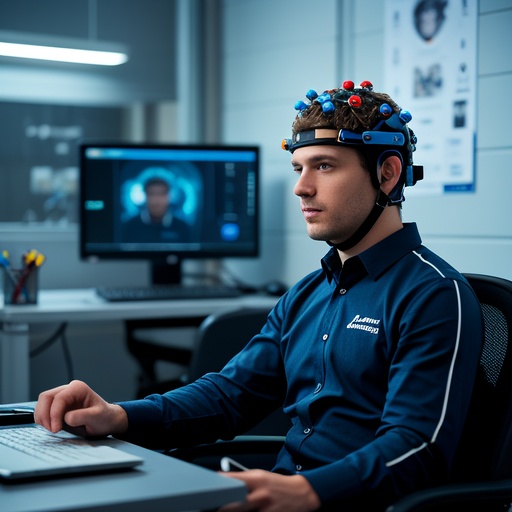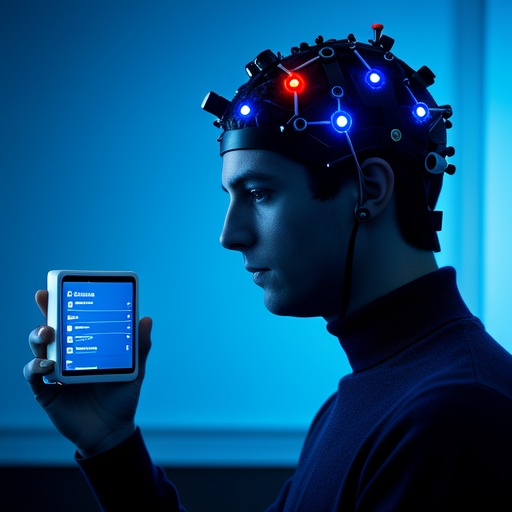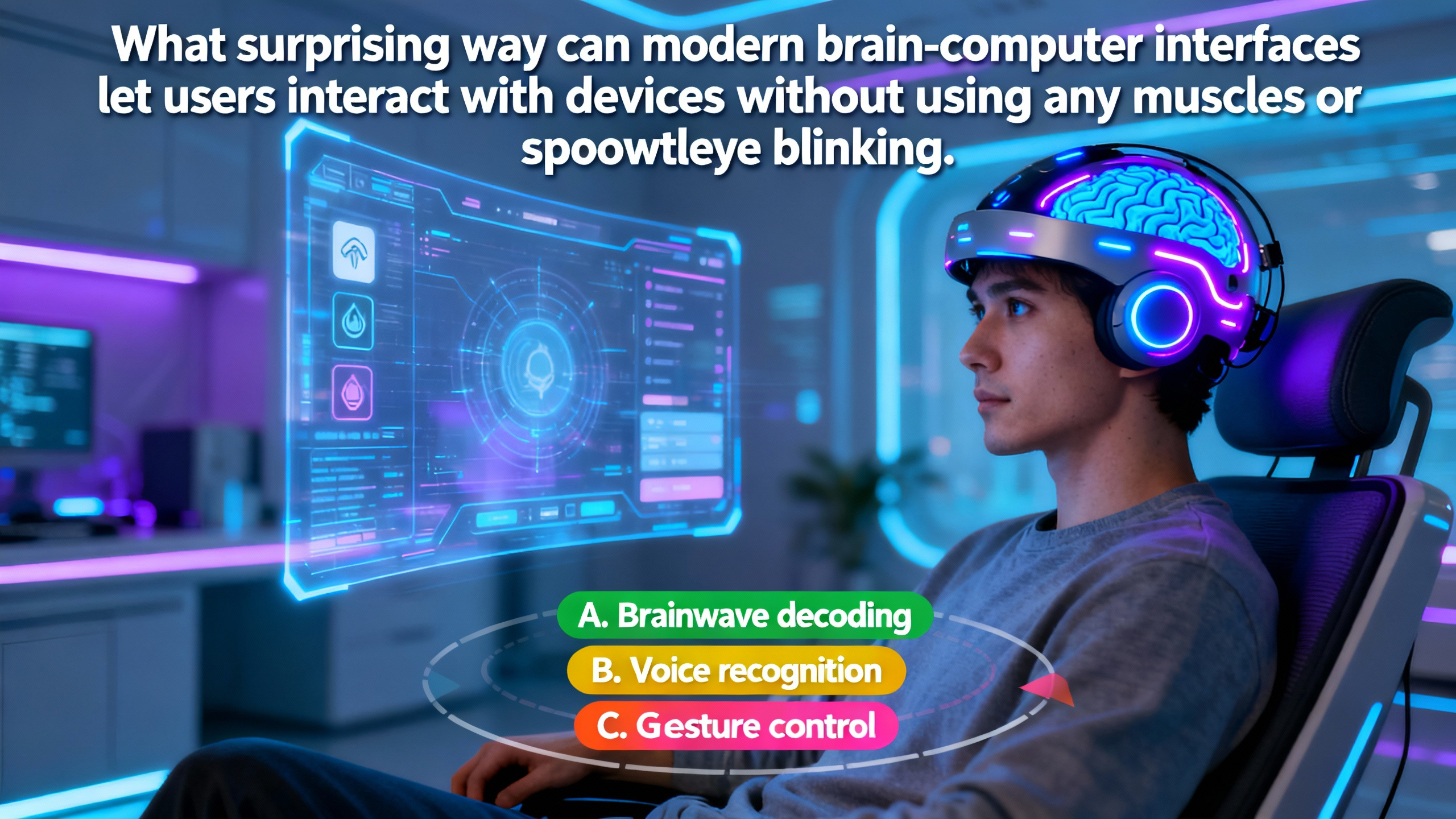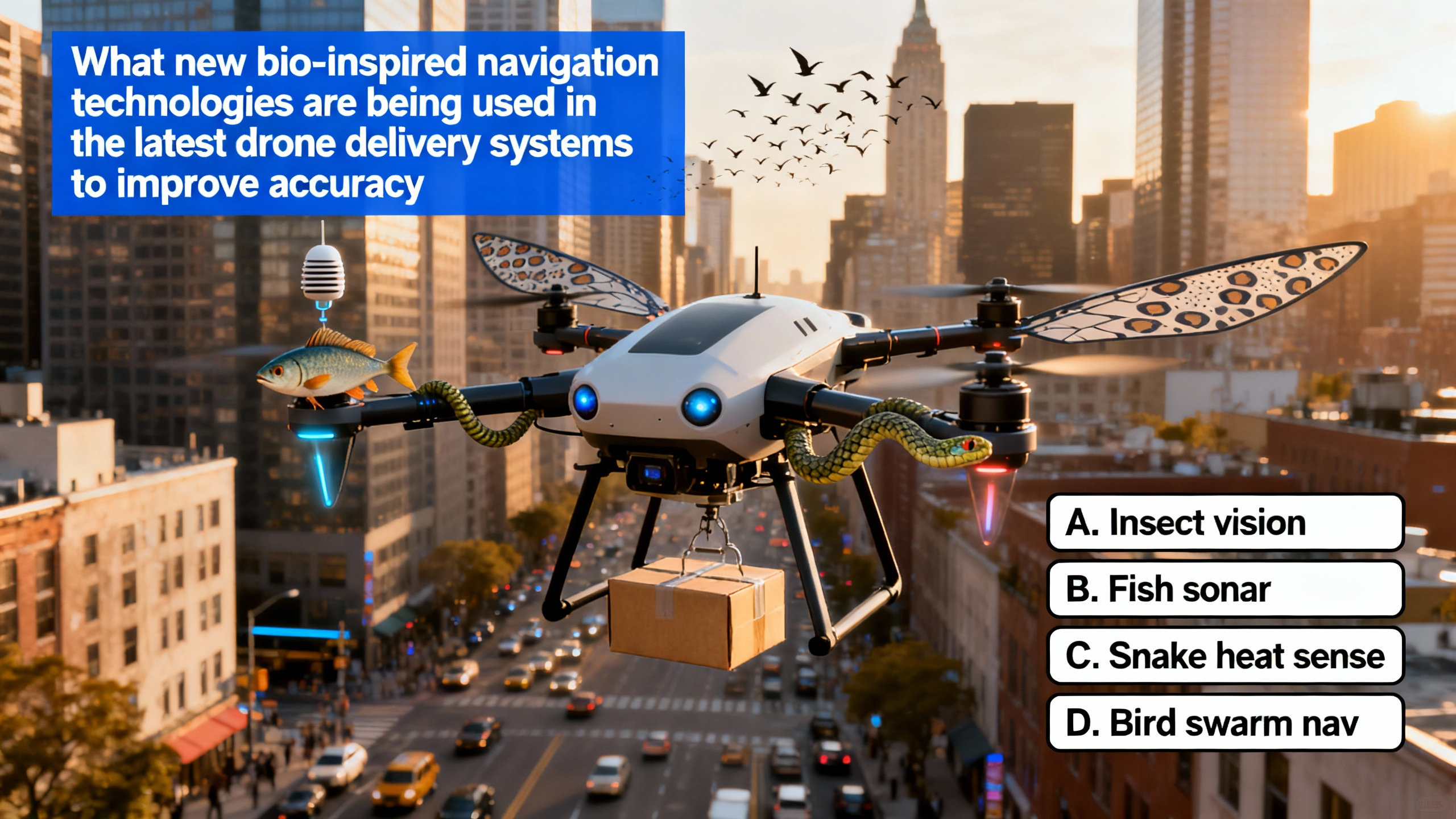Modern Brain - Computer Interfaces: Revolutionary Interaction Methods
 Modern brain - computer interfaces (BCIs) have introduced some truly astonishing ways for users to interact with devices without relying on muscle movement or spoken commands. One of the most remarkable methods is through the detection and interpretation of brainwaves associated with specific mental states or intentions.
Modern brain - computer interfaces (BCIs) have introduced some truly astonishing ways for users to interact with devices without relying on muscle movement or spoken commands. One of the most remarkable methods is through the detection and interpretation of brainwaves associated with specific mental states or intentions.
 BCIs can pick up on the electrical activity in the brain using electrodes placed on the scalp. When a user simply thinks about a particular action, such as moving a cursor on a screen to the left or right, the brain generates a unique pattern of electrical signals. Advanced algorithms in the BCI system then analyze these patterns. For example, if a user is imagining writing a letter, the system can detect the neural patterns related to the motor planning of hand - writing movements. Based on this analysis, the system can translate these thoughts into corresponding commands for a device. This means that a person who may be paralyzed or have limited physical abilities can control a computer, a wheelchair, or even a robotic arm just by thinking about the desired movement.
BCIs can pick up on the electrical activity in the brain using electrodes placed on the scalp. When a user simply thinks about a particular action, such as moving a cursor on a screen to the left or right, the brain generates a unique pattern of electrical signals. Advanced algorithms in the BCI system then analyze these patterns. For example, if a user is imagining writing a letter, the system can detect the neural patterns related to the motor planning of hand - writing movements. Based on this analysis, the system can translate these thoughts into corresponding commands for a device. This means that a person who may be paralyzed or have limited physical abilities can control a computer, a wheelchair, or even a robotic arm just by thinking about the desired movement.
 Another surprising way is by leveraging the brain's response to visual stimuli. Scientists have developed BCIs that use a technique called steady - state visually evoked potentials (SSVEPs). In this method, a device presents a series of flashing visual patterns at different frequencies. When a user focuses their attention on a specific pattern, the brain responds with an electrical signal at the same frequency as the flashing pattern. The BCI can detect this frequency - specific response and use it to determine which pattern the user is looking at. This can be used for tasks such as selecting items on a menu or controlling a smart home device. For instance, a user can choose to turn on a light or change the channel on a TV just by looking at the corresponding option on a screen, all without moving a muscle or speaking a word.
Another surprising way is by leveraging the brain's response to visual stimuli. Scientists have developed BCIs that use a technique called steady - state visually evoked potentials (SSVEPs). In this method, a device presents a series of flashing visual patterns at different frequencies. When a user focuses their attention on a specific pattern, the brain responds with an electrical signal at the same frequency as the flashing pattern. The BCI can detect this frequency - specific response and use it to determine which pattern the user is looking at. This can be used for tasks such as selecting items on a menu or controlling a smart home device. For instance, a user can choose to turn on a light or change the channel on a TV just by looking at the corresponding option on a screen, all without moving a muscle or speaking a word.
 In conclusion, modern BCIs have opened up new frontiers in human - device interaction. By decoding brainwaves related to thoughts and responses to visual stimuli, they offer a revolutionary way for users to interact with technology, providing hope and increased functionality for those with physical limitations.
In conclusion, modern BCIs have opened up new frontiers in human - device interaction. By decoding brainwaves related to thoughts and responses to visual stimuli, they offer a revolutionary way for users to interact with technology, providing hope and increased functionality for those with physical limitations.





